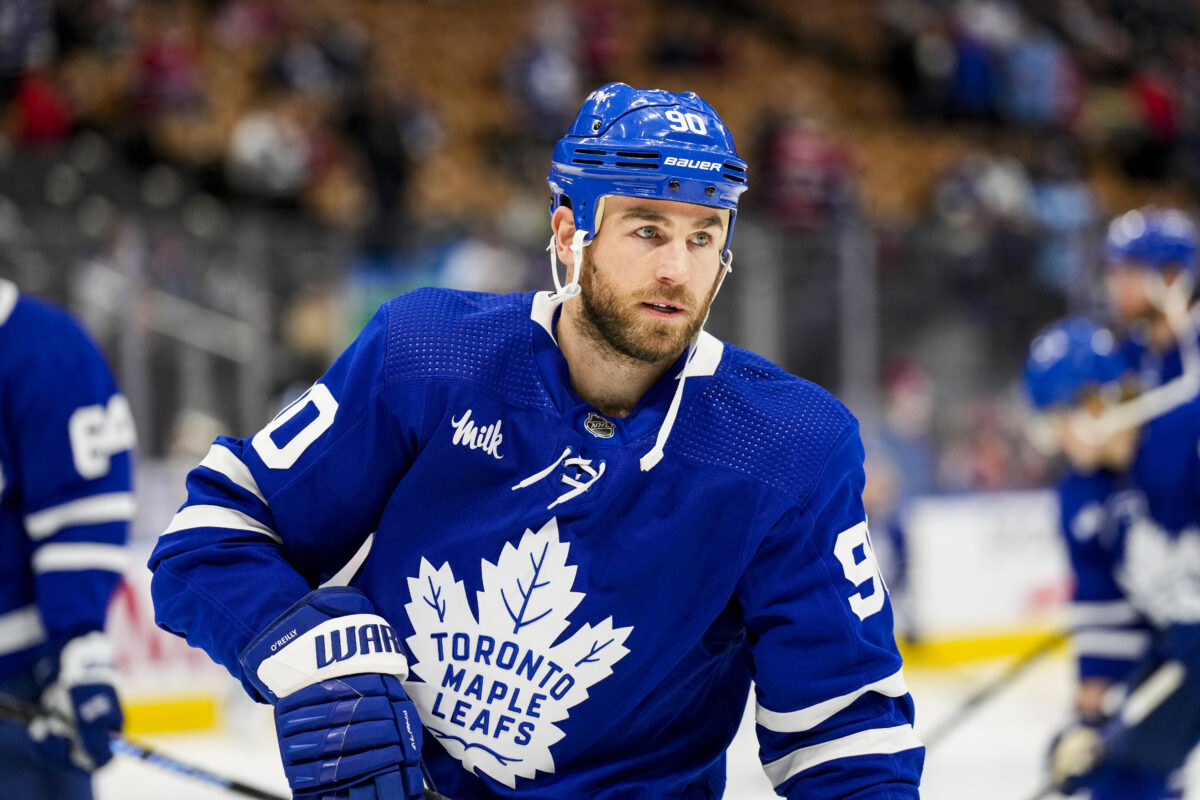Every NHL offseason, the cry goes up: “We can’t lose him for nothing!” It’s a mantra fans repeat, a talking point for pundits, and sometimes even a player’s rallying cry. The logic seems obvious—if a team doesn’t trade a pending free agent, it’s a failure. But in today’s NHL, with a hard salary cap and constant roster juggling, that old belief doesn’t always survive a closer look.
Related: Ex-Maple Leafs Kasperi Kapanen: Where Is He Now?
Just ask the Toronto Maple Leafs about Zach Hyman. They let him walk to the Edmonton Oilers in 2021 rather than match his price, thinking the decision made sense at the time. But Hyman erupted into a 50-goal scorer—something he never reached in Toronto. Did the Maple Leafs blow it? Maybe. Or maybe Hyman was never going to hit that ceiling in a lineup crowded with elite scorers. Either way, his success in Edmonton still stings, and it’s the kind of “lose him for nothing” story that sparks debate long after contracts are signed.
For All NHL Teams, Salary Cap Flexibility Matters
When a player leaves in free agency, it’s true—you don’t get a draft pick or a prospect back. But you do gain something just as valuable: salary cap space. That money can be used to sign younger players, add depth in key spots, or retain essential core pieces. Cap flexibility can be more critical than extracting a mid-level trade return.

Mostly, we won’t see a highlight reel titled “$4.5 million in available cap space.” Still, that space can make the difference when pursuing a free agent, retaining a young star, or adjusting a roster during an injury crisis. Wise salary-cap planning enabled the team to sign William Nylander to an eight-year, $92 million contract extension in January 2024. While the front-end of that deal might seem huge, his average annual value of $11.5 million will play well in the years to come.
For Some NHL Teams, Timing and Fit Trump Headlines
Timing isn’t everything either. A lot of the noise around “losing a player for nothing” comes from the assumption that every pending free agent should be traded before the deadline. That’s not always wise. Not every player has significant trade value at that point, and not every team is in a position to make a sale.
Related: Today in Hockey History: Aug. 14
Brock Boeser and the Vancouver Canucks offer a helpful example. For years, half the hockey world said, “Trade him before he walks.” The Canucks kept him, and in 2023–24, he rewarded them with a career-best 40 goals. That production helped Vancouver stay competitive and maintain its value, demonstrating that sometimes retaining a player is the smarter move.
Letting a Player Walk Can Be Intentional
Not every departure is a mistake—sometimes it’s intentional. Ryan O’Reilly’s brief stint with the Maple Leafs in 2023 is a case in point. Toronto acquired him at the trade deadline for leadership and playoff experience, and he delivered, helping them win a first-round series. Rumours suggest O’Reilly—despite liking Toronto—felt too much under the microscope. Neither side pushed for a long-term fit. Letting him walk wasn’t a waste; it avoided a situation where neither party would have been satisfied.

The Maple Leafs addressed his departure by signing Tyler Bertuzzi and Max Domi to short-term, one-year deals. Bertuzzi treated it as a stopover and left the following summer. Domi, however, embraced the city. After finishing his single-season contract, he re-upped. He signed a longer-term deal – probably for less money than he could have gotten elsewhere.
Related: What’s Really Holding the Toronto Maple Leafs Back?
For his salary, Domi provides Toronto with a player who wants to be in the city. Comings and goings, such as these departures and careful re-signings, show that roster management isn’t about trying to hold on to every player. It’s just as valuable as making the right moves for both the present and the future.
Understanding When Losses Aren’t Failures
Even when it hurts, losing a player isn’t always a sign of mismanagement. Sometimes the real failure occurs earlier—overpaying a player early in his career. By the time that contract expires, the team may decide not to re-sign him. That could explain Mitch Marner’s departure. The best-run teams—Tampa Bay Lightning, Colorado Avalanche, Florida Panthers, Boston Bruins—know that letting even talented players walk at the right time can keep the roster healthy and flexible.

Ultimately, the “lose him for nothing” mantra is too simplistic. NHL teams must weigh timing, fit, and strategic flexibility. Not every departure is a failure. Sometimes players leave because they want something different. In total, all these considerations are part of a larger plan for sustainable success.
[Note: I’d like to thank Brent Bradford (PhD) for his help co-authoring this post. His profile can be found at www.linkedin.com/in/brent-bradford-phd-3a10022a9]
